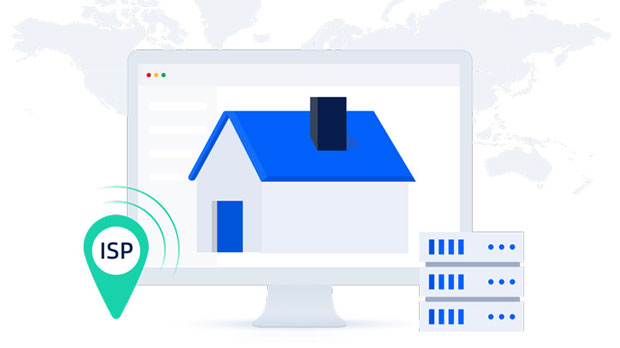How to use IP proxy address for YouTube channel management?
Managing a YouTube channel can often require overcoming geographical restrictions, enhancing privacy, and ensuring smoother operations. One of the most effective ways to achieve these goals is by utilizing ip proxy addresses. By masking your real IP address, proxies can help you manage content more securely, access region-locked content, and automate various aspects of channel management. In this article, we will delve into the concept of ip proxies, how they function, and their significance in YouTube channel management, focusing on practical applications and potential advantages for creators. Understanding IP Proxies and Their RoleBefore diving into how IP proxies can help with YouTube channel management, it’s essential to understand what an IP proxy is and how it operates. An IP proxy acts as an intermediary between your device and the internet. When you use a proxy, your internet traffic is routed through a server, which then accesses websites on your behalf. This process masks your real IP address, replacing it with the proxy server's IP. This can offer several advantages, especially when managing online accounts or platforms like YouTube.There are various types of IP proxies, including residential proxies, datacenter proxies, and mobile proxies. Each type serves a unique purpose depending on the specific use case. For YouTube management, the most commonly used proxies are residential and mobile proxies. These proxies are perceived as more legitimate by websites due to their association with real, physical devices.Enhancing Privacy and SecurityOne of the primary reasons YouTube creators use IP proxies is to maintain privacy and enhance security. When managing a YouTube channel, whether for personal or business use, you might want to avoid revealing your actual location and identity. Using a proxy ensures that your real IP address is hidden, making it more difficult for third parties to track or trace your online activities. This can be particularly beneficial if you're managing multiple accounts or interacting with sensitive content.By using proxies, you can also prevent unwanted data collection by external entities. Without proxies, your browsing habits, location, and other personal information can be accessed by websites or even advertisers. Proxies act as a protective layer, preventing such data from being exposed and potentially misused.Accessing Region-Locked Content and FeaturesYouTube, like many other platforms, offers region-specific content, features, and restrictions. Some videos, for instance, may be blocked or restricted in certain countries. Additionally, YouTube offers features that are only available in specific regions. In such cases, using an IP proxy can enable creators to bypass geographical barriers by allowing them to appear as if they are browsing from another location.For YouTube channel management, this ability to bypass geo-restrictions is invaluable. If a content creator wants to view videos or use features that are only available in specific countries, they can use proxies to simulate browsing from that location. For example, if a creator wants to access YouTube features or participate in trends only available in the US, they can use a US-based proxy server to appear as if they are located in the United States.Automating YouTube Channel ManagementManaging a YouTube channel involves several repetitive tasks, such as posting content, responding to comments, or even liking videos to boost engagement. When these tasks are done manually, they can be time-consuming. However, by using IP proxies in combination with automation tools, these processes can be streamlined.For example, you can use bots to manage comments or schedule video uploads. Since proxies hide your real IP address, automation tools won't raise red flags or cause your account to be flagged for suspicious activity. Additionally, proxies allow you to simulate interactions from different locations, which can be useful for creating a more diverse and global presence on your channel.Overcoming YouTube Account LimitationsYouTube imposes certain limitations on users to prevent spam or manipulation. For instance, there are limits to the number of accounts you can create or the number of actions you can take within a given time frame. By using multiple proxies, creators can distribute their activities across several IP addresses, thus minimizing the risk of hitting these limits.For example, if you're managing multiple YouTube channels or accounts, proxies allow you to avoid triggering YouTube's security measures. Without proxies, performing actions such as subscribing to other channels, commenting, or liking videos from the same IP address could be considered spammy behavior. By rotating proxies, you can distribute these activities across different IPs, reducing the chance of account suspension or restriction.Reducing the Risk of Account Bans or SuspensionsYouTube has strict policies in place to detect unusual behavior, which may lead to account suspensions or bans. For example, sudden changes in activity, like logging in from different geographic locations or engaging in too many actions in a short amount of time, could raise suspicions. By using proxies, you can distribute your activities across various IP addresses, making it more difficult for YouTube’s algorithms to detect irregularities.If you’re managing several accounts or interacting with a large number of videos, proxies help you avoid leaving traces that could trigger account restrictions. They provide an added layer of anonymity, ensuring that your channel and actions appear natural to YouTube's security system.Improving Performance with Faster Load TimesIn some cases, using IP proxies can even improve the overall performance of your YouTube channel management. This is particularly true when proxies are used to access local or regional content. By routing your traffic through a proxy server located closer to the content, you can experience faster load times and reduced latency, improving the user experience when managing your channel.For instance, if you're managing a YouTube channel that is primarily focused on a specific region, using a local proxy server can make it easier and faster to upload content or view analytics related to that region. Additionally, proxies can help in mitigating internet congestion or slow speeds, ensuring that your content remains accessible without delays.Conclusion: Maximizing the Potential of IP Proxies for YouTube Channel ManagementUsing IP proxies for YouTube channel management offers a host of benefits, including improved privacy, the ability to access region-locked content, and more efficient automation. By masking your real IP address, proxies allow you to operate securely, overcome geographical restrictions, and reduce the risk of account bans or suspensions. They also provide the flexibility to manage multiple accounts without triggering security measures or running into platform limitations.For YouTube creators, understanding how to leverage IP proxies is an essential part of maximizing the potential of your channel. By incorporating proxies into your strategy, you can enhance your overall channel management, boost engagement, and create a more global presence.
2025-02-06

























































